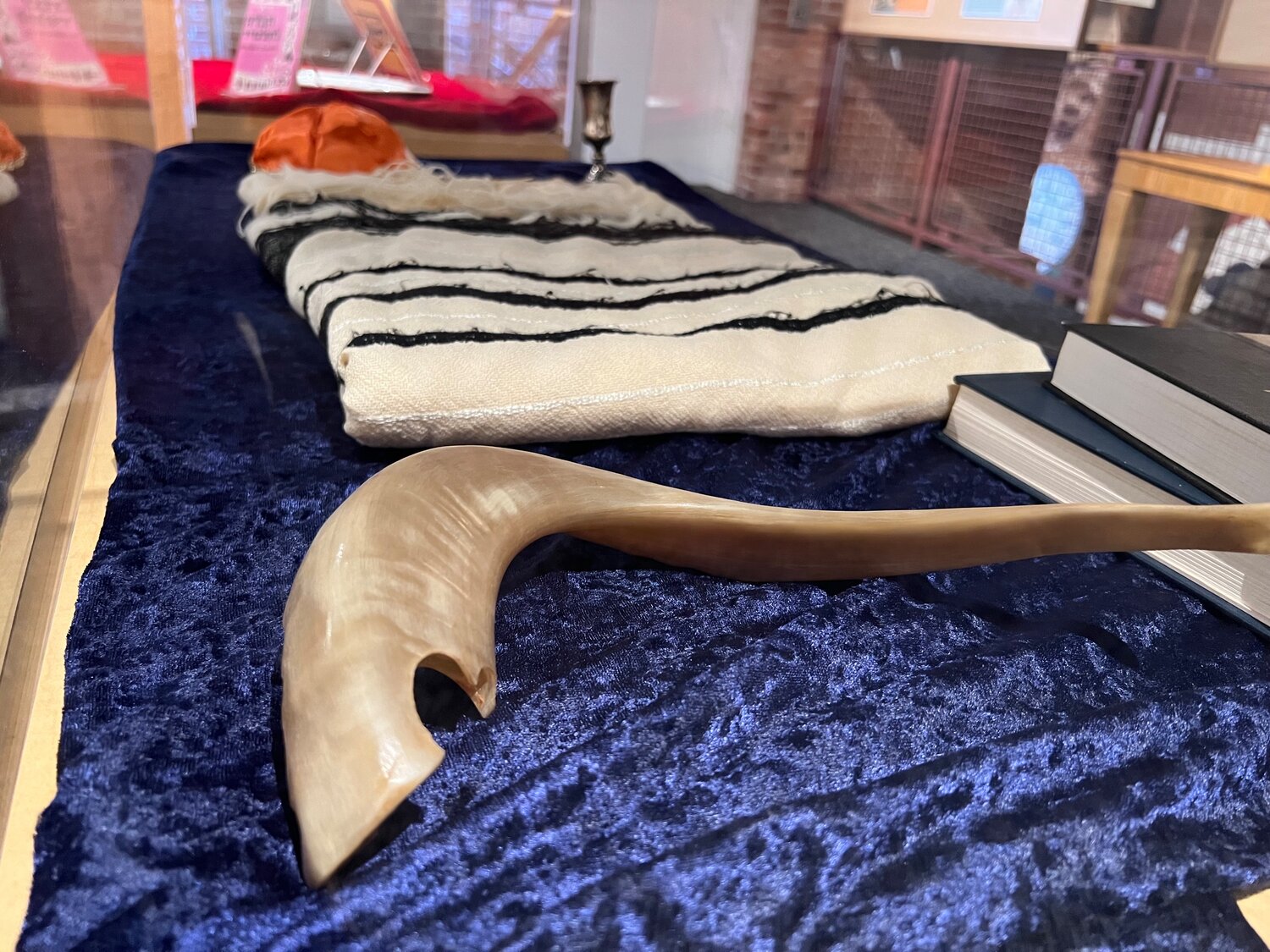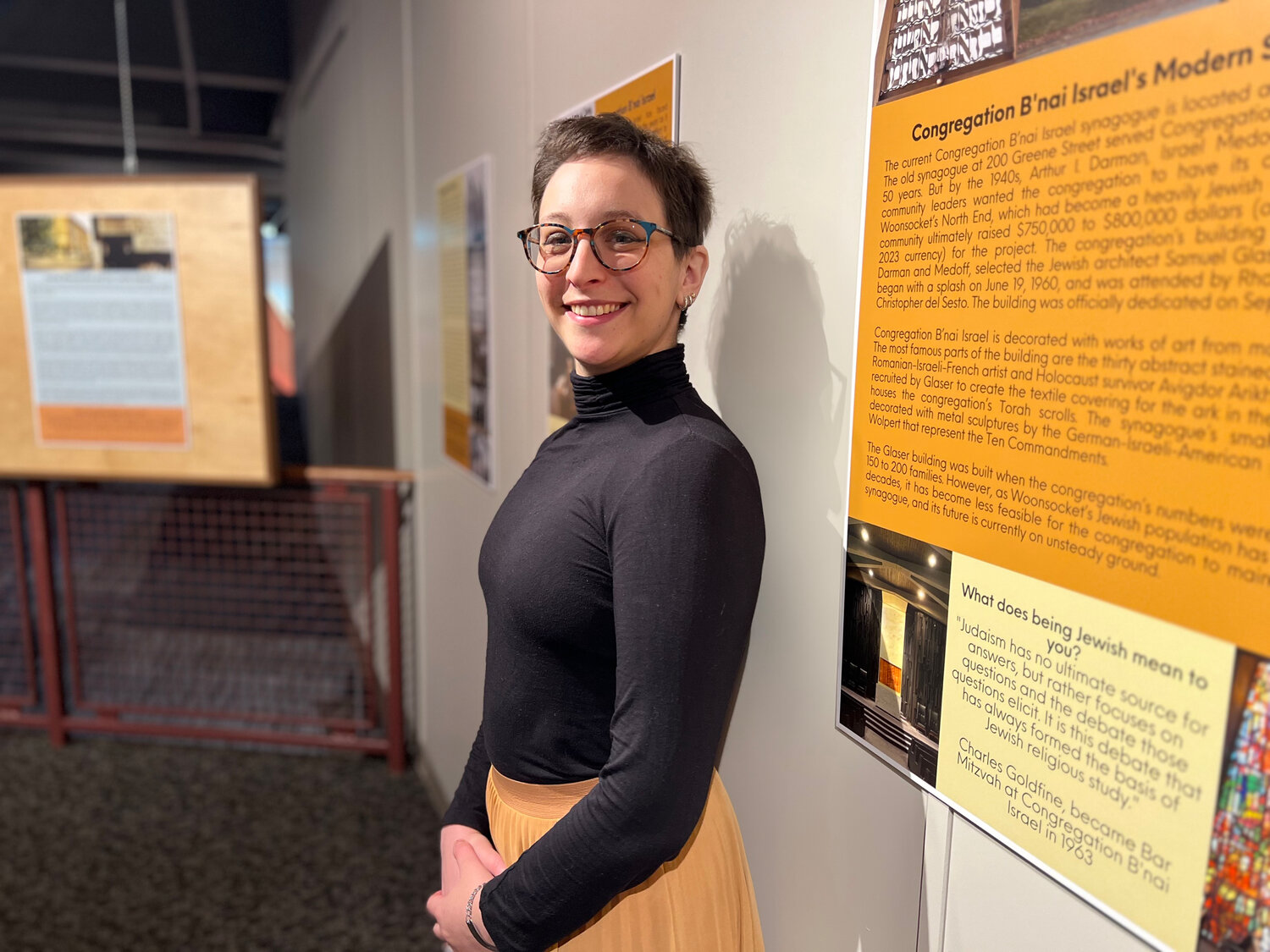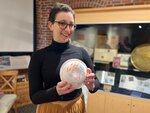Jews of Woonsocket exhibit opens at Museum of Work & Culture
WOONSOCKET – You can spell the Hebrew word “mishpakha” several ways in English, but it always means the same thing: extended family, from the members of your household to second cousins and surrogate aunts. This is the theme of “Mishpakha: Jewish History of Woonsocket,” a new exhibit at the Museum of Work & Culture.
“It’s family, but it’s not just blood relations,” is how Deborah Krieger, the museum’s program coordinator and curator of the exhibit, defines mishpakha.
The exhibit explores the lives and legacy of Woonsocket’s Jewish residents, who left a remarkable footprint on this Blackstone Valley mill city. While Woonsocket is best known for its French-speaking population, Jewish immigrants arrived as early as the 1860s and became movers and shakers in the town’s factories and business district. At the community’s height, as many as 200 Jewish families, or nearly 1,000 Jews, lived in the city.
Krieger was raised in a Reform family in Los Angeles and came to Rhode Island to earn a master’s degree in public humanities from Brown University. She has been the program coordinator at the Museum of Work & Culture since 2021 and has spearheaded several traveling Smithsonian exhibits for the museum.
Krieger said she got the idea for the exhibit after driving by Woonsocket’s Congregation B’nai Israel. The large, modernist synagogue was designed by renowned architect Samuel Glaser and completed in 1962. Today, the synagogue is in need of significant renovation, but its unique aesthetic and gorgeous features, including magnificent stained-glass windows by the Israel painter Avigdor Arikha, continue to impress visitors.
Inspired by the shul, Krieger spent the next year doing a deep dive into Woonsocket’s Jewish past, including interviews with locals, books and volumes of The Call, the city’s newspaper since 1892.
“I love this kind of detective work,” Krieger says.
“Mishpakha” is her first original show for the museum, and the fruits of her labors fill a room on the building’s second floor with archival photographs, expositional plaques and sacred artifacts. Visitors can see B’nai Israel’s original charter, plus a first printing of the “Community Cookbook,” which was published in 1947 by the congregation’s sisterhood and includes hundreds of traditional recipes. Images of B’nai Israel are projected on a wall, with an emphasis on the stained-glass windows.
“Curating the exhibit has been really wonderful and complicated in some ways,” says Krieger. “I grew up in a different denomination and across the country, and I realized how much I have in common with them [the Jews of Woonsocket]. My Jewish identity connects me to people all over the world. It made me feel more aware of how many ways there are to be Jewish.”
The exhibit has already sparked interest from synagogues and schools across the state, and the museum’s staff anticipates interest from locals as well, including non-Jewish patrons.
For visitors unfamiliar with Jewish culture, Krieger has provided explanatory notes and a glossary of basic terms. She also spearheaded the reprinting of the “Community Cookbook,” which is on sale in the museum’s shop.
ROBERT ISENBERG (risenberg@jewishallianceri.org) is the multimedia producer for the Jewish Alliance of Greater Rhode Island and a writer for Jewish Rhode Island.













